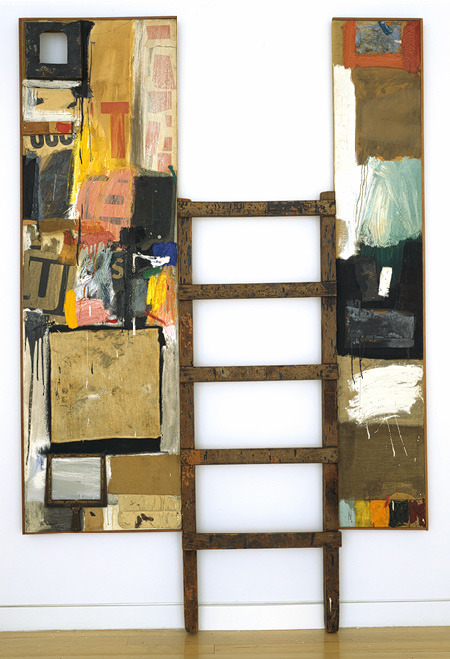We define queer as self-identified lgbtq (lesbian gay bisexual trans or queer). To submit artists for consideration or to become a contributor, please email queercontemporary (at) gmail.com.
Don't wanna be here? Send us removal request.
Photo
Catherine Opie
Miggi & Ilene, Los Angeles, California 1995 Chromogenic print

124 notes
·
View notes
Photo

Melanie, & Sadie Rain, New York, New York
Catherine Opie
1998
637 notes
·
View notes
Photo

Catherine Opie
Norma & Eyenga
Minneapolis Minnesota (from the Domestic Series)
1998
360 notes
·
View notes
Photo

Catherine Opie
Melissa & Lake,
Durham North Carolina (from the Domestic series),
1998. Chromogenic print
In 1998, Opie traveled cross-country in her motor home for two months in order to photograph lesbian couples. This series, called Domestic—of which Melissa & Lake, Durham, North Carolina is an example—presents these couples involved in everyday, household activities: relaxing in their backyard, hanging out in their kitchen, playing with their children. There is no sensationalism here. Much like the formal studio portraits before them, these intimate photographs speak both to Opie's identification with her subjects and to the overwhelming absence of such images in mainstream representations.
#Catherine Opie#The domestic series#Durham NC#photography#queer art#queer contemporary art#contemporary art
220 notes
·
View notes
Photo

Guglielmo Plüschow
81 notes
·
View notes
Photo
Guglielmo Plüschow

277 notes
·
View notes
Photo

Glenn Ligon’s “One Black Day” is part of his Neon show at Luhring Augustine right now. It will only be turned on election day of this year. Of the piece Ligon says, “Well, it’s a pun.”
67 notes
·
View notes
Photo



Holly Hughes
“Sins of Omission”
June 18, 19 & 20, 1993
20 notes
·
View notes
Photo


Holly Hughes After A Fashion
12 notes
·
View notes
Photo

Holly Hughes Dress Suits to Hire "In DRESS SUITS TO HIRE, a heady mixture of erotic fantasy and hard-boiled pulp drama, two "sisters" who live in a rental clothing shop use the merchandise to try on various facets of their personalities. Created by Holly Hughes, Peggy Shaw and Lois Weaver, DRESS SUITS TO HIRE is a haunting and hilarious look into a room where one woman embodies a dark and predatory sexuality while the other one struggling against lesbian desires and her autonomous and abusive right hand. DRESS SUITS TO HIRE, which won OBIE Awards for both Shaw and Hughes (Shaw for her performance in the original 1987 production and a special citation for Hughes for the 1993 revival), is a mellifluous ode to lesbian eros and a joyful, literate send-up of all romantic fantasy." - LAMAMA
15 notes
·
View notes
Photo

“Ladies” are the kind of people who won’t let my girlfriend use the public ladies’ room, thinking she’s not a woman. Oh, but they’re not going to let her use the men’s room either - they’re not going to let her be a man either. If she’s not a man, and she’s not a woman, then what is she? Once I asked my mother what fire was: a solid, a liquid, or a gas? And she said it wasn’t any one of those things - it was something that happened to things: a force of nature, she called it. Maybe that’s what she is: a force of nature. For sure she is something that happened to me. -Holly Hughes, Clit Notes, 1993
188 notes
·
View notes
Photo

Holly Hughes
How would you describe your work? Holly Hughes: I would describe it [as] based on personal experience, a new and improved autobiography. Because why would someone just tell their life story without improving on it in some way? I think that’s just lazy, or as Tim Miller, who is also performing, says, ‘Everything you’re about to see tonight is true and some of it actually happened.’ So, it’s kind of a blend of personal experience, political satire, rant, and my poetic license. It’s coming from a lefty, lesbian perspective.
Excerpt from her interview with Union Weekly
9 notes
·
View notes
Photo

Robert Rauschenberg Winter Pool, 1959 Combine painting: oil, paper, fabric, wood, metal, sandpaper, tape, printed paper, printed reproductions, handheld bellows, and found painting, on two canvases, with ladder
105 notes
·
View notes
Photo

44 notes
·
View notes
Video
youtube
THE ERASED de KOONING
Not long before he died, Robert Rauschenberg told the story of the Erased de Kooning Drawing in this BBC video. He’s a good storyteller. When he finished his erasure, some folks accused him of vandalizing a de Kooning, saying he destroyed art. It wasn’t vandalism, he tells the interviewer. Then what was it? “Poetry,” he says.
46 notes
·
View notes
Photo

Robert Rauschenberg, Inlet, 1959, Combine, oil, newspaper, paper, wood, metal, fabric, pant leg, postcard, zipper, wire hanger, paper clip, can lids, stuffed bird,
144 notes
·
View notes
Photo

HAPPY BIRTHDAY to one of our favorites! Robert Rauschenberg "Born in Port Arthur, Texas in 1925, Robert Rauschenberg imagined himself first as a minister and later as a pharmacist. It wasn’t until 1947, while in the U.S. Marines that he discovered his aptitude for drawing and his interest in the artistic representation of everyday objects and people. After leaving the Marines he studied art in Paris on the G.I. Bill, but quickly became disenchanted with the European art scene. After less than a year he moved to North Carolina, where the country’s most visionary artists and thinkers, such as Joseph Albers and Buckminster Fuller, were teaching at Black Mountain College. There, with artists such as dancer Merce Cunningham and musician John Cage, Rauschenberg began what was to be an artistic revolution. Soon, North Carolina country life began to seem small and he left for New York to make it as a painter. There, amidst the chaos and excitement of city life Rauschenberg realized the full extent of what he could bring to painting." - PBS
11 notes
·
View notes